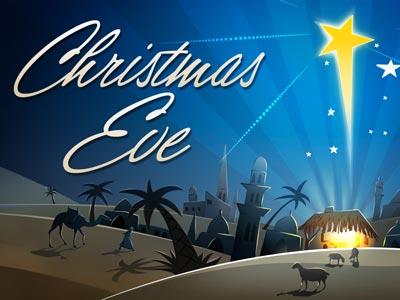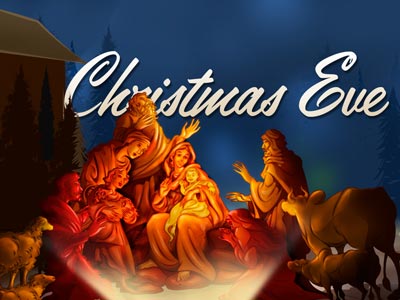-
Worship In The Splendor Of Holiness Series
Contributed by Freddy Fritz on Dec 11, 2021 (message contributor)
Summary: In Psalm 96, the Psalmist gives four commands and backs up each command with a reason for their obedience. Psalm 96:1-13 shows us the coming of the Lord to rule as king over all the earth.
Scripture
Today is the Third Sunday of Advent in 2021. We continue in our sermon series, “Christ’s Advent in the Psalms.”
On this Third Sunday of Advent, I want to examine Psalm 96. You may recall in our study of the life of King David that after he had been anointed king over Judah and Israel, he brought the ark of the covenant to Jerusalem. Some consider this to be one of the greatest highlights of David’s storied life. Thousands of people gathered to see the ark of the covenant. There were scores of priests. There were choirs and an orchestra. A massive celebration was held because the ark of the covenant was the visible sign of God’s presence with his people.
David composed a song of thanks for this wonderful occasion. That song is found in 1 Chronicles 16:8-36. The middle verses of that song (vv. 23-33) have been set into Psalm 96. Other portions of the song in 1 Chronicles are found in Psalms 105:1-5 and 106:1, 47-48.
The point of Psalm 96 is that it calls on God’s people to worship God in the splendor of holiness and to proclaim to the nations that the Lord is coming. This joyful Psalm pulsates with joy and expectation of the coming of the Lord.
Let us read Psalm 96:1-13:
1 Oh sing to the Lord a new song;
sing to the Lord, all the earth!
2 Sing to the Lord, bless his name;
tell of his salvation from day to day.
3 Declare his glory among the nations,
his marvelous works among all the peoples!
4 For great is the Lord, and greatly to be praised;
he is to be feared above all gods.
5 For all the gods of the peoples are worthless idols,
but the Lord made the heavens.
6 Splendor and majesty are before him;
strength and beauty are in his sanctuary.
7 Ascribe to the Lord, O families of the peoples,
ascribe to the Lord glory and strength!
8 Ascribe to the Lord the glory due his name;
bring an offering, and come into his courts!
9 Worship the Lord in the splendor of holiness;
tremble before him, all the earth!
10 Say among the nations, “The Lord reigns!
Yes, the world is established; it shall never be moved;
he will judge the peoples with equity.”
11 Let the heavens be glad, and let the earth rejoice;
let the sea roar, and all that fills it;
12 let the field exult, and everything in it!
Then shall all the trees of the forest sing for joy
13 before the Lord, for he comes,
for he comes to judge the earth.
He will judge the world in righteousness,
and the peoples in his faithfulness. (Psalm 96:1-13)
Introduction
In an article for Christian History, Chris Armstrong writes:
I confess: as an adolescent, when my parents tried to impress on my two brothers and me the importance and the intricacies of Advent observance, I could hardly keep from rolling my eyes. In a country that spends its cold Decembers in hot pursuit of food, presents, and parties, the historical niceties of an ancient liturgical season seemed…well…irrelevant.
These days, on the other side of an evangelical conversion and nearly a decade of graduate study in church history, I’ve begun to see what excited my parents about Advent. I’m even entertaining the possibility that my own young family might benefit from an informed observance of Advent….
In fact, Advent season presents a unique opportunity to many Protestants. It’s like the once-a-year conjunction of two planets: It brings a great mass of Bible-loving, praise-and-worshipping, extemporaneously praying born-again Protestant Christians into close contact with a big chunk of the historic church’s liturgy. Even many non-liturgical Protestants don’t think twice about joining in the season’s rituals, old as well as new. They pull out and count off advent calendars, listen to lectionary sermon themes and Bible readings, and recite set prayers at the dinner table around candles in meaningful hues of purple and rose….
What is this thing called Advent?
Once upon a time, in fourth and fifth century Gaul and Spain, “Advent” was a preparation not for Christmas but for Epiphany. Epipha-what? That’s the early-January celebration of such diverse events in Jesus’s life as his Baptism, the miracle at Cana, and the visit of the Magi. In those days, Epiphany was set aside as an opportunity for new Christians to be baptized and welcomed into the church. So believers spent Advent’s 40 days examining their hearts and doing penance.
It was not until the 6th century that Christians in Rome began linking this season explicitly to the coming of Christ. But at that time, and for centuries after, the “coming” that was celebrated was not the birth of Jesus, but his Second Coming. It was not until the Middle Ages that the church began using the Advent season to prepare to celebrate Christ’s birth. And even then, this newer sense of the Lord’s “advent” or coming did not supplant the older sense – the Second Coming. And the muted, Lent-like mood of penitential preparation remained alongside the joyous anticipation of Jesus’ birthday.

 Sermon Central
Sermon Central



